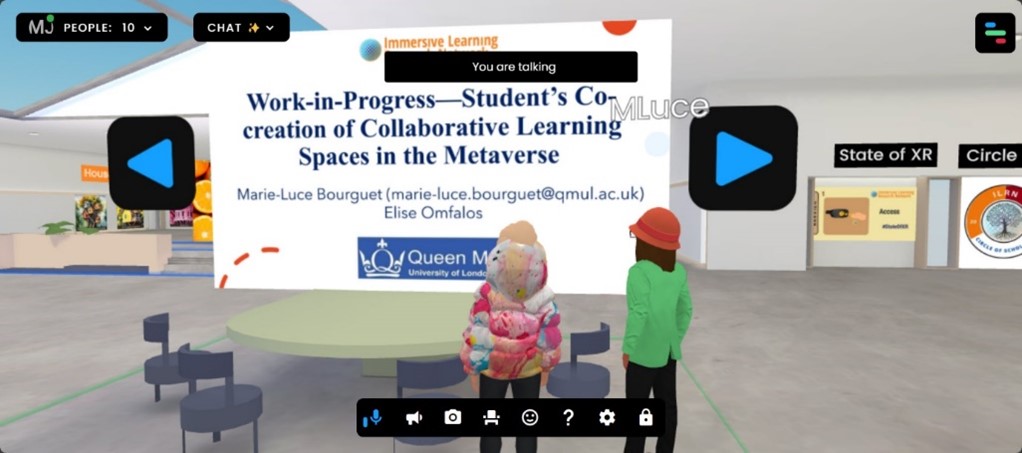iLRN (Immersive Learning Research Network) hosts an annual conference dedicated to the latest research in interactive and immersive media in education. The conference covers a broad definition of ‘education,’ including schools, universities, and the GLAM sector (galleries, libraries, archives, and museums).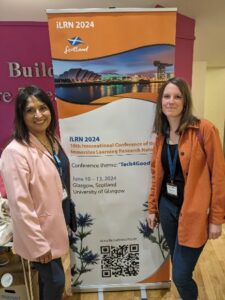
A 3-day virtual conference took place at the beginning June, shortly followed by a conference in Glasgow, which was attended by TELT’s Surjit Uppal and Megan Jones.
The conference featured a variety of research presentations from educational organisations and institutions, several keynote speeches and a panel discussion specifically focused on immersive learning in higher education.
Immersive learning initiatives are already underway at Queen Mary University, and TELT aims to raise awareness and create more opportunities to expand these efforts. Here are a few examples:
- Lab practical work and Mixed reality – Digital Education Studio
- Immersive Learning – Elise Omfalos, Queen Mary Academy
- Meet the FMD Immersive Learning Lab – Digital Education Studio
Immersive Learning – What is it?
Immersive learning involves various media and technologies, including virtual spaces (e.g., game environments and virtual ‘twin’ campuses), extended reality (XR), interactive content, simulations, and virtual labs. At the conference, many examples showcased storytelling and gamification, emphasising “play as a powerful tool for education” as a key theme, as Sara de Freitas, from the University of South Wales, shared in the keynote.
Attendees and speakers generally agreed that we are shifting away from traditional learning models towards new paradigms where immersive technologies play a more significant role. These paradigms may include:
- Challenge and activity-led learning
- Peer-focused interactions
- Competency and personalised learning
- Anytime, anywhere learning
- Student developed pedagogy
- AI scaffolded learning
The consensus among researchers is that immersive learning enhances engagement, deepens understanding, and improves retention by allowing students to experience and interact with the material in dynamic, multi-sensory ways. It also offers opportunities for personalised learning and can make education more inclusive by accommodating diverse learning preferences and needs. The challenges of immersive learning were not overlooked, including accessibility issues, the “technology gap,” and the added workload for already overburdened educators.
Examples of Immersive Learning at iLRN
Frame
This metaverse platform was used to host the online poster presentations at iLRN. Frame allows you to create highly customisable avatars and design virtual meeting or exhibition spaces. A notable feature was the use of audio zones, where you could only hear people within an outlined area, making it easy to wander between posters and drop in on discussions around the room. In this screenshot, Megan is with Queen Mary University academic Marie-Luce, who was presenting her research on collaborative learning in the metaverse.
Virtuoso project – Virtual Reality and Autism
This vocational training programme uses immersive technologies to teach essential life skills such as using public transportation to autistic adults.
The 4-stage training programme includes:
- A comic strip style social narrative on a phone/tablet.
- A 360-degree video modelling shuttle training skills.
- A VR environment to enact shuttle training skills.
- Real-world performance.
They found an increase in self-efficacy and independence in task performance and the recognition of places and object across virtual and real-world contexts.
TimeSpan – Living in the Digital Heritage Age
This heritage and art Institution in Helmsdale has digitally reconstructed historical landscapes and utilised immersive VR experiences to bridge the present with the past while advocating against the destruction of archaeological sites. 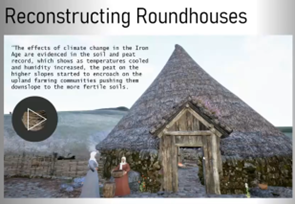 Their immersive learning toolkit transforms static collections into dynamic experiences, challenging perceptions and enhancing critical thinking processes.
Their immersive learning toolkit transforms static collections into dynamic experiences, challenging perceptions and enhancing critical thinking processes.
Digital Twins and Metaversities
Old Dominion University is set to release a “digital twin” and a “Metaversity” to its students, created in partnership with the Advanced Educational Technologies Lab at Democritus University in Greece. The digital twin replicates the physical structure of a university building within a virtual environment, facilitating virtual tours and providing a platform for innovative teaching methods, where students can engage in simulations and practical exercises in a controlled, realistic setting. In contrast, the Metaversity offers a unique virtual space with no real-world counterpart.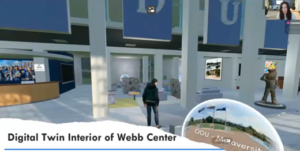
By integrating these advanced digital environments, Old Dominion University aims to enrich the educational experience and foster a deeper connection between students and their campus.
CVI-SIM
Cerebral visual impairment (CVI) is a common condition originating in the brain, making it challenging to explain, as individuals born with CVI have never experienced normal sight. This creates a barrier to understanding and support, which this project from the University of St Andrews aims to address.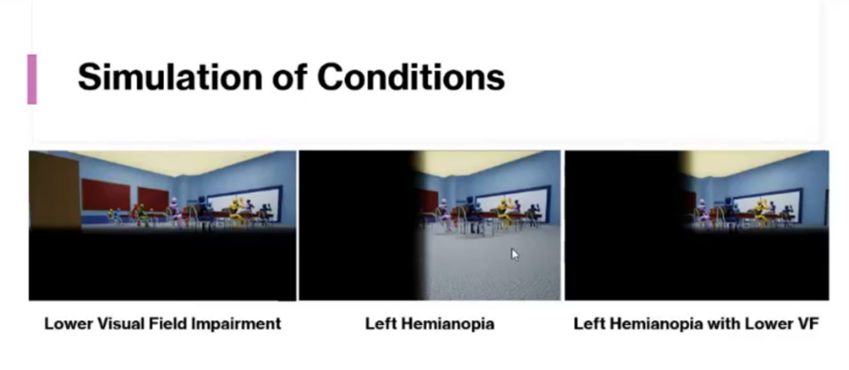
They created virtual simulations of CVI, accessible via a headset, allowing users to experience navigating various environments with this condition. The simulations are intended for parents, teachers, and medical professionals to gain insight into what individuals with CVI endure. Evaluations showed that users experienced increased empathy and understanding, leading to tangible changes such as reducing clutter in classrooms.
TELT and Immersive Learning
Immersive learning technologies create the potential for new approaches but require capacity building and a level of digital capability that might be challenging to develop alone. TELT aims to address this by collaborating closely with the Queen Mary Academy and the Digital Education Studio. Together, we will develop a broader understanding of the pedagogical, user acceptance testing (UAT), and learning design necessary for integrating these technologies into teaching and learning at Queen Mary University of London.


